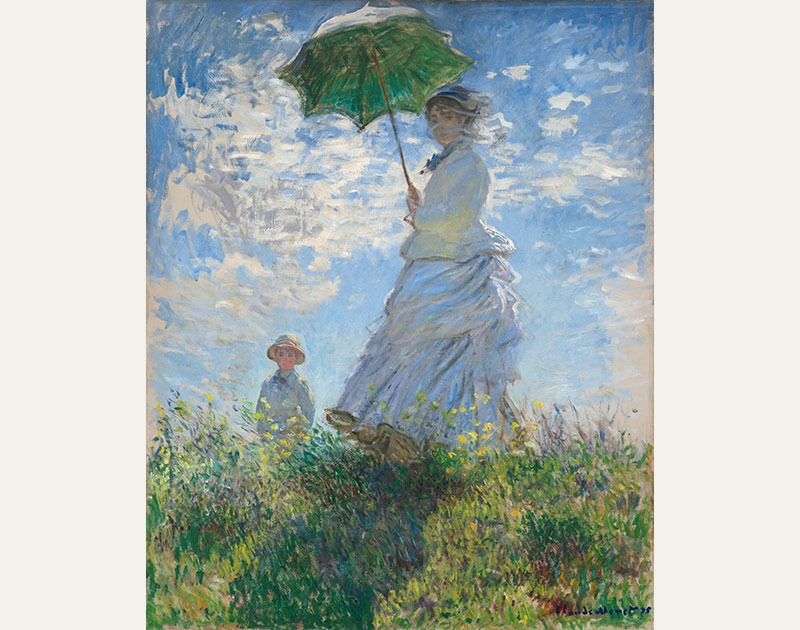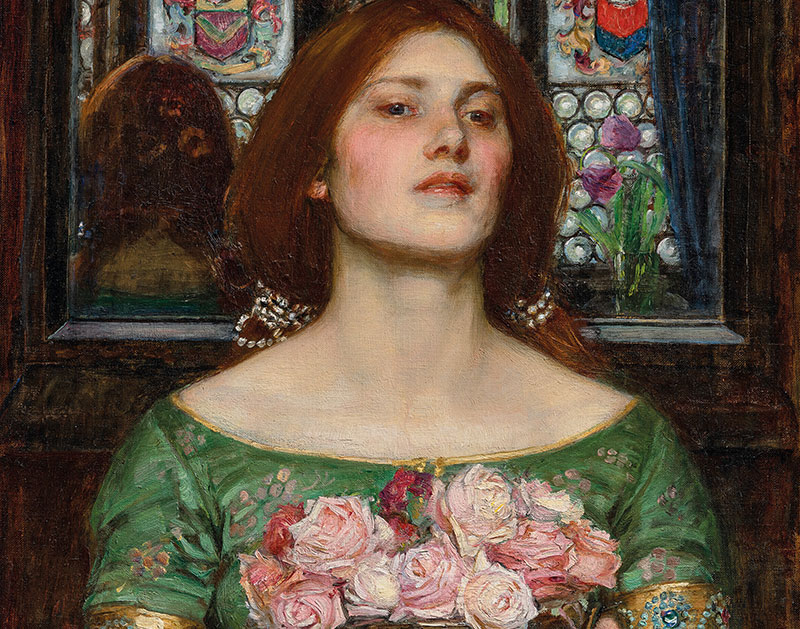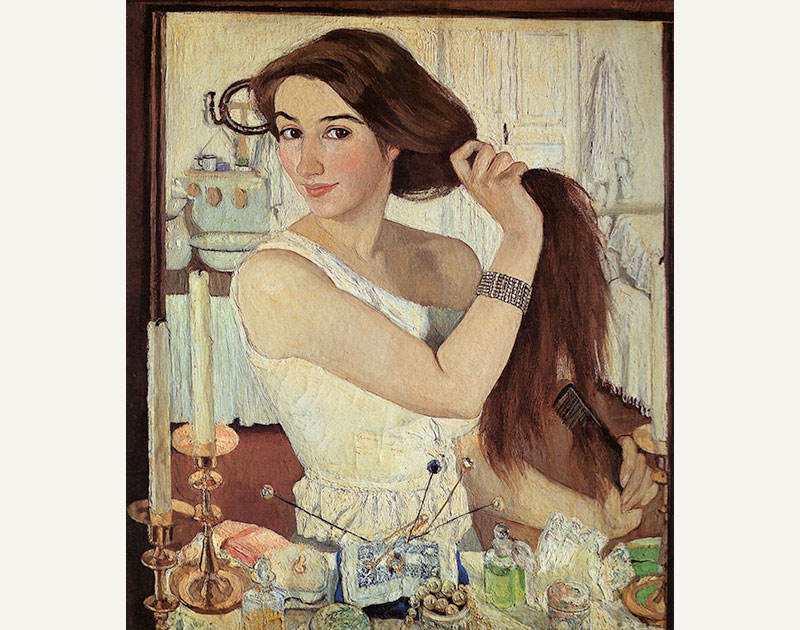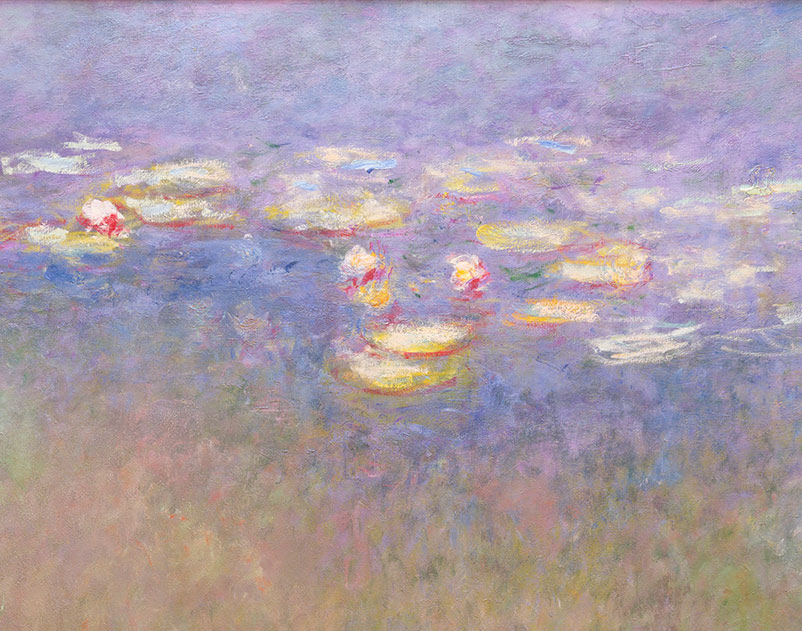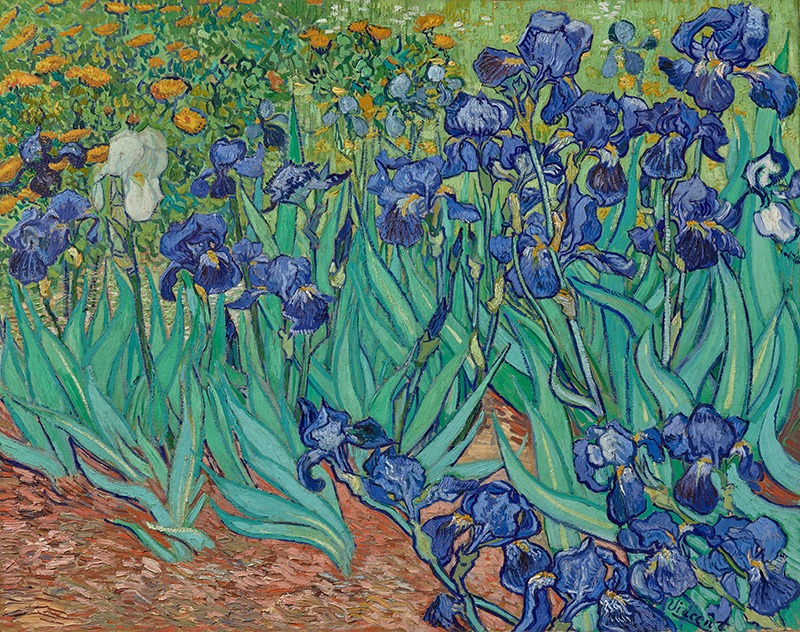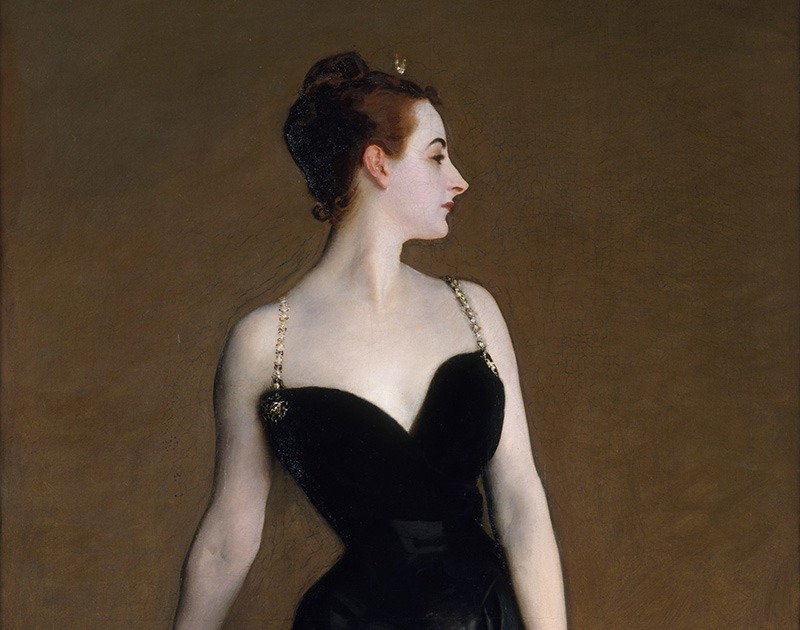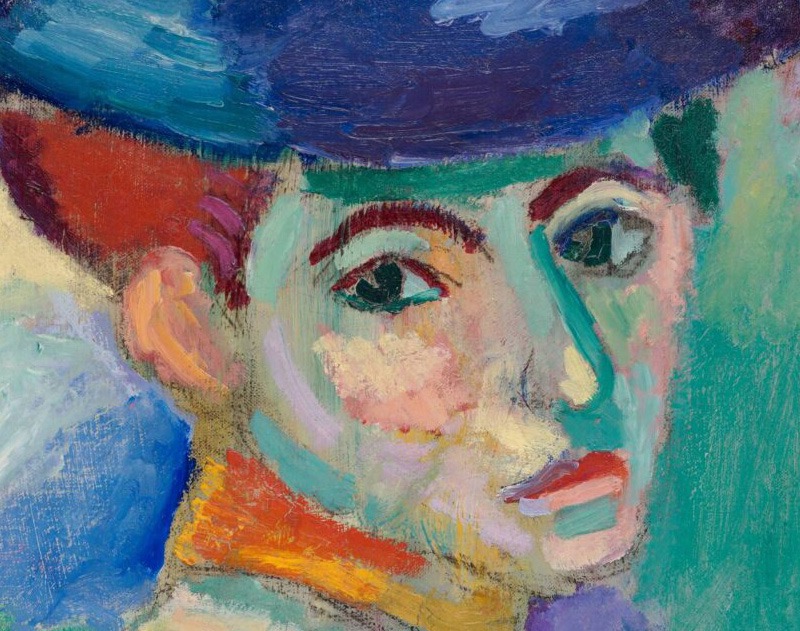A Memento Mori in Silk and Petals
John William Waterhouse’s 1908 masterpiece Gather Ye Rosebuds While Ye May (118x157cm, oil on canvas) reimagines Robert Herrick’s 17th-century poem To the Virgins through an Edwardian lens. Now held in private Swiss collections since 1981, this haunting work—last publicly displayed at London’s 2023 Fin-de-Siècle Beauty exhibition—depicts three maidens harvesting roses against crumbling Roman columns. The central figure’s half-parted lips and torn sleeve (revealing a serpent bracelet) whisper secrets beyond Herrick’s carpe diem theme.
Secret Codes in the Rose Garden
Commissioned during Britain’s suffrage movement turmoil, Waterhouse embedded radical subtexts beneath the floral facade:
- The Wilted Garland: Fallen petals forming a skull shape near the lower right, visible only under UV light
- Broken Column Capital: A deliberate reference to Pompeii’s ruins, linking Edwardian complacency to Roman decline
- Hourglass Necklace: Worn by the leftmost figure, its sand nearly depleted despite her youthful appearance
Recent X-ray scans revealed pentimenti showing Waterhouse originally painted a fourth, elderly woman—later overpainted to intensify the youth/mortality contrast. This aligns with his diaries noting: “Beauty’s triumph lies in its impending loss.”
Why Art Students Keep Rediscovering It
Ranked among Art UK’s “Top 10 Most Analyzed Pre-Raphaelite Works”, the painting’s enduring relevance stems from:
- Floral Timekeeping
Each rose species blooms at specific daylight hours—the depicted Rosa gallica (morning) and Rosa damascena (dusk) create a symbolic 12-hour cycle. Botanists at Kew Gardens confirmed this detail in 2019. - Silk Controversy
The diaphanous dresses caused 1909 tabloid outrage for “indecent transparency”, though Waterhouse defended them as technical experiments in layering madder lake pigments. - Modern Echoes
TikTok’s #RosebudChallenge (2.3M posts) recreates the central figure’s pose, often missing her warning grip on the thorny stem—a detail feminist scholars interpret as resisting patriarchal plucking metaphors.


